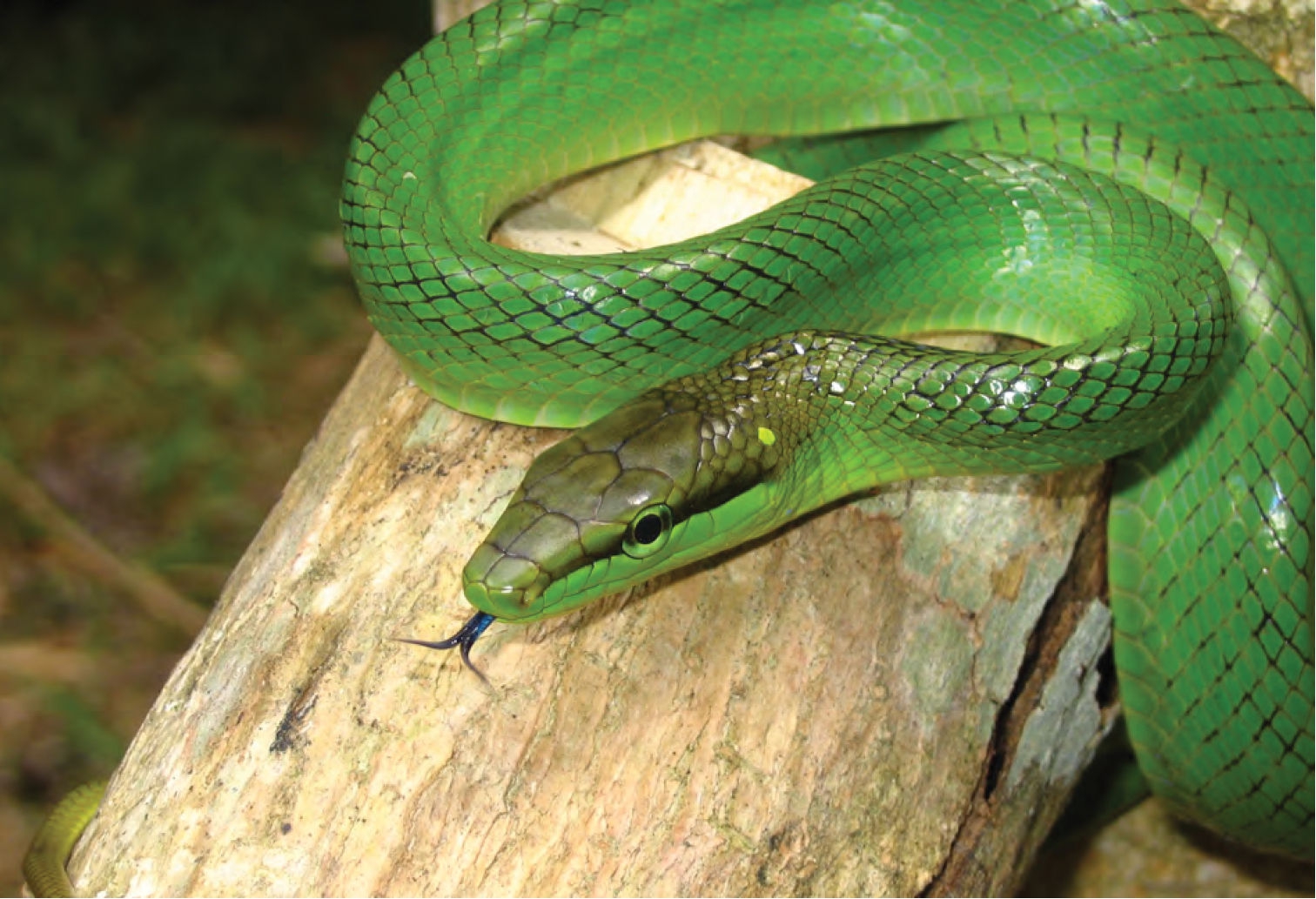| Citation |
|
Description |
Geographic Range [top]
Range Description: This species ranges from Myanmar eastward to central Viet Nam, southward through the Malay Peninsula and in island Southeast Asia (including both the Andaman and Nicobar Islands) as far east as the Philippines and Lombok, Indonesia (Smith 1943, David and Vogel 1996, Nguyen et al. 2009). In the Philippines it occurs in the Sulu Archipelago, Balabac, Palawan, Bohol, Lubang, Luzon, Negros, Panay, Itbayat, Samar and Mindoro.
Countries occurrence:
Native:
Brunei Darussalam; Cambodia; India (Andaman Is., Nicobar Is.); Indonesia; Lao Peoples Democratic Republic; Malaysia; Myanmar; Philippines; Singapore; Thailand; Viet Nam
Additional data:
? Upper elevation limit (metres): 1100
Range Map: Click here to open the map viewer and explore range.
Population [top]
Population: This species is common in Borneo (Stuebing and Inger 1999) but it is generally hard to find in the Philippines (A. Demegillo and J. C. Gonzalez pers. comm.). It is uncommon in Viet Nam (Q.T. Nguyen pers. comm. October 2011). Due to high rates of harvesting in parts of its range, it is likely to be suffering local population declines, but the impact of this activity on the global population is unknown.
Current Population Trend: Decreasing
Additional data:
? Population severely fragmented: No
Habitat and Ecology [top]
Habitat and Ecology: This is a diurnal, arboreal snake that occurs in primary forest, but appears to prefer edge habitats, secondary growth, plantations and rural gardens (Stuebing and Inger 1999, A. Demegillo and A. Diesmos pers. comm.). The species occurs up to 1,100m asl (Cox et al. 1998). It is oviparous, laying clutches of between 5 and 12 eggs (Cox et al. 1998, Stuebing and Inger 1999).
Systems: Terrestrial
Use and Trade [top]
Use and Trade: This species is harvested for the international pet trade. Being a large snake, it is eaten in Lao PDR. There is no evidence that this species is used in Viet Nam (Q.T. Nguyen pers. comm. October 2011), and no information on any exploitation in Cambodia (T. Neang pers. comm. October 2011). It is heavily-exploited in Java for its skin and meat (M. Auliya pers. comm. October 2011), and is opportunistically exploited throughout Indonesia for the pet trade, for skins and for sale in restaurants (R.P.H. Lilley pers. obs. 2011). In the Indonesian pet trade, there is particular demand for a grey and yellow colour morph known from Central Java (Iskandar 1987, D. Iskandar pers. comm. October 2011).
Threats [top]
Major Threat(s): There appear to be no major threats to this widespread and somewhat adaptable species. The scale of exploitation may not be large enough to threaten this species across its range, although the effects of harvesting on local subpopulations are unclear.
Conservation Actions [top]
Conservation Actions: The wide distribution of this species coincides with protected areas. Research is needed to determine harvest and trade levels of this species and if this represents a threat to the persistence of the species.
Citation: Wogan, G., Vogel, G., Thy, N., Nguyen, T.Q., Demegillo, A., Diesmos, A.C. & Gonzalez, J.C. 2012. Gonyosoma oxycephalum. The IUCN Red List of Threatened Species 2012: e.T183196A1732988. http://dx.doi.org/10.2305/IUCN.UK.2012-1.RLTS.T183196A1732988.en. Downloaded on 25 April 2017.
Disclaimer: To make use of this information, please check the .
Feedback: If you see any errors or have any questions or suggestions on what is shown on this page, please provide us with feedback so that we can correct or extend the information provided
|

